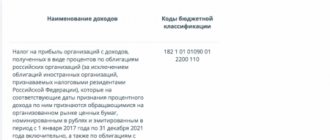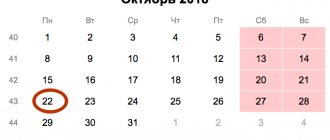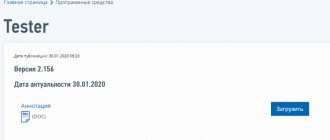What is a payment order
A payment order is an order drawn up in a document of a certain form from the account owner to the bank servicing this account to write off a specific amount of money to the recipient’s account opened with the same bank or other financial institution. The payment order form is approved by Bank of Russia Regulation No. 383-P dated June 19, 2012. It is used to transfer funds:
- for delivered (performed, rendered) goods (work, services);
- to budgets of all levels, as well as the social insurance fund;
- for the purpose of returning/placing credits (loans), deposits and paying interest on them;
- for other purposes provided for by law or agreement.
The payment order form and a sample of how to fill it out can be found here.
Procedure for filling out a payment order
The content of the payment order and its form must comply with the requirements prescribed by law. The document regulating the procedure for filling out the fields of payment orders is Order of the Ministry of Finance of the Russian Federation dated November 12, 2013 No. 107n, which describes in detail the algorithm for filling out each field.
You can find samples of filling out payment forms for different types of taxes in the Ready-made solution from ConsultantPlus. Try K+ for free and get samples from the experts.
For information about which details are basic for a payment order, read the article “Basic details of a payment order”. And how the list of details to fill out depends on who the transferred funds are intended for, read here.
If you still have questions about filling out payment forms, ask them on our forum. For example, you can find out how to fill out a payment order for a fine on the thread.
Rules for issuing a payment order to pay a fine
The main regulatory document defining the procedure for filling out payment slips is Order of the Ministry of Finance of the Russian Federation dated November 12, 2013 No. 107n (Appendix 2). Let's look at the main points.
- Detail 104 indicates the KBK (20-digit budget classification code), which can be found from the list approved by the Ministry of Finance for the corresponding year. It should be noted that, according to paragraph. 7 p. 4 sec. II of the same order, for fines the income subtype code 3000 is used (14–17 digits of the code).
NOTE! From 05/01/2021, be sure to fill out field 15, which indicates the account number of the recipient's bank (the number of the bank account included in the single treasury account (STA)). From this date, the details of the Treasury accounts and the name of the recipient bank also change. The period from 01/01/2021 to 04/30/2021 is transitional. Those. The bank will accept payments with both old and new details. This follows from the letter of the Federal Tax Service of Russia dated October 8, 2020 No. KCh-4-8/16504. See here for details.
For example, KBK:
- for a fine related to income tax credited to the federal budget: 182 1 0100 110;
- fine related to income tax credited to the regional budget: 182 1 0100 110;
- fine related to personal income tax: 182 1 0100 110.
For the KBK for paying fines for all types of taxes, see the Ready-made solution from ConsultantPlus. If you do not have access to the K+ system, get a trial online access for free.
Remember that the BCC for arrears, penalties and fines for the same tax are different, which means you need to issue separate payments to pay them.
The amount of fines can be found in the article “Responsibility for tax offenses: grounds and amount of sanctions .
- In detail 105, OKTMO is filled in - the code of the territory of the municipality where funds from paying fines are collected.
- Requisite 106 - value of the payment basis - 2 letters. In case of payment of a fine, the letters TR are used (which means a requirement when the tax office issued this document under Article 69, 101.3 of the Tax Code of the Russian Federation).
- Props 107 (tax period) has a value of 0.
- Detail 108 indicates the requirement number; the symbol No. does not need to be inserted.
- Indicator 109 contains the date of the document, the number of which is reflected in detail 108, in the format “DD.MM.YYYY”.
- Detail 110 has not been filled in since January 1, 2015 (this is due to the fact that clause 11 of Order No. 107n was canceled by Order of the Ministry of Finance No. 126n dated October 30, 2014).
- The “Code” detail indicates a unique accrual identifier (UIN); it must be contained in the tax demand that it made for payment of fines. If this code is not present, then 0 is entered.
IMPORTANT! When composing or reproducing a payment order on paper, you can fill out the code on 2 or more lines.
- The “Purpose of payment” detail must contain the following information: type of payment and its basis.
- Details “Payment order” — 5.
- Props 101:
- when paying fines for yourself: 01 - for legal entities, 09 - for individual entrepreneurs;
- for payments made as a tax agent: 02.
For information about filling out a payment order online, read the article “Where you can fill out a payment order online .
You can download the payment order form on our website.
Field 107 “Tax period” in the payment order for 2020–2021
Let us consider in detail the rules for filling out the tax period in the payment order (field 107 “Tax period”) in 2020–2021.
Check whether you have correctly determined the tax period for your case, with the help of explanations from ConsultantPlus experts. Get trial access to K+ for free.
This field is filled in when generating payment orders for the payment of taxes and contributions:
- To indicate the period for which the tax (contribution) is paid.
- To indicate a specific payment date - in exceptional cases established by law.
Field 107 has 10 characters, 8 of them are indicated in a specific order, and the remaining 2 are used for separation and are filled with periods. Signs 1 and 2 indicate the frequency of tax (contribution) payment, which can take the following values:
- menstruation (MS);
- quarterly (QW);
- semi-annual (PL);
- annual (AH).
The 4th and 5th digits of the indicator correspond to the number of the selected period:
- for monthly payments, the number of the month of the reporting period is indicated - such a number can take a value from 01 to 12 according to the number of months in the year;
- for quarterly payments, the quarter number is given - the number takes a value from 01 to 04 according to the number of quarters;
- for a half-year, the half-year number is indicated, it has 2 values: 01 and 02;
- for payments made once a year, zeros are entered.
The 3rd and 6th characters correspond to the “dot” symbol and are separating characters.
Characters 7 to 10 are reserved for indicating the reporting year. If the law specifies the exact date for tax payment, then this date is indicated in the “Tax period” field of the payment order.
The “Tax period” field can be filled in for payments not only of the current year, but also of past periods, if the taxpayer himself has discovered errors in the reports already submitted and independently pays additional tax (contribution). In this case, field 107 should reflect the tax period in which the changes were made.
There are a number of situations in which a specific date is indicated in the “Tax period” field . This occurs when the associated Payment Basis field 106 has a specific encoding. A specific date in such situations means for the basis of payment:
- TP - payment deadline established by the tax authority;
- RS - date of payment of part of the installment tax amount, based on the existing installment schedule;
- FROM - the date when the deferred payment ends;
- RT - date of payment of part of the restructured debt based on the existing restructuring schedule;
- PB - the end date of the procedure that is applied in a bankruptcy case;
- PR—end date of suspension of collection;
- IN - date of payment of part of the investment tax credit.
In the event that payment is made for a debt identified during a tax audit or according to a writ of execution, a zero value is indicated in the “Tax period” field.
In case of advance payment of tax, field 107 indicates the tax period for which payment is made.
Please note that when making payments to customs, field 107 is filled in completely differently.
ConsultantPlus experts provided detailed comments on filling out all fields of the payment order for the payment of taxes. If you don't have access to K+, get it for free and follow the directions.
Functions of the “tax period” field and payment order
Payments are required for the following transactions:
- Transfer of funds to counterparties as payment for goods or services;
- Transfer to state and non-state funds (for example, tax police);
- Settlements with credit institutions or replenishing deposits from an existing personal account;
- Financial transactions within the framework of signed agreements and concluded agreements;
- Mandatory regular payments: payment of utilities, telephone, Internet, payment of state duty, etc.
Column 107 is required to be filled out, since it indicates the billing period. It is displayed in the form of ten characters, the first eight digits are the period for which the fee is paid, the remaining two characters are the points delimiting the encoding points.
Example
The first two digits indicate the frequency of payment:
- MS – every month;
- KV – transfer is carried out once a quarter;
- PL – the transaction is carried out once every six months;
- GD - annual payments.
The next two digits specify the billing period. If the payment is made monthly, you must enter a number from 01 to 12, this indicates in which month you want to transfer the money. For quarterly cancellation, an indicator from 01 to 04 (quarter number) is indicated. For semi-annual transactions, encryption 01 or 02 is used, indicating in which half of the year the payment will take place. An operation carried out once a year does not require additional coding and is indicated as 00.
The remaining numbers are the year. For example, if you are transferring a payment to the Federal Tax Service for March of the current year, then the customs authority code in field 107 will look like this: MS.03.2018.
Examples of filling out field 107
Let's look at the rules for filling out the “Tax period” field in the 2021 payment order using examples.
Example 1
The organization transfers the advance payment for property tax for the 4th quarter of 2021, therefore, in field 107 it will be indicated: KV.04.2021.
Example 2
An individual entrepreneur pays tax in connection with the application of the simplified tax system for 2021, in accordance with the declaration submitted to the tax authority; field value 107 - GD.00.2020.
Example 3
The organization pays the monthly personal income tax payment for January 2021; field value 107 - MS.01.2021.
Example 4
The organization pays tax at the request of the tax authority, which contains a specific deadline for payment - 01/26/2021; field value 107 - 01/26/2021.
In 2021, changes have been made to the details of the payment order for the payment of taxes. From 05/01/2021, be sure to fill out field 15: the number of the bank account that is part of the ESC. In addition, the Treasury account and the name of the bank have changed. The period from 01/01/2021 to 04/30/2021 is transitional, i.e. the payment will be credited correctly to your personal account even if you issue a payment using the old details. From 05/01/2021 the bank will no longer allow payment. We have provided the details here.
Exceptional situations
In some cases, the tax period in the 2021 payment bill has a different meaning. Most Popular:
- Contributions for injuries. When listing insurance coverage against accidents and occupational diseases, indicate “0” in clause 107.
- State duty. If the institution pays the state fee to the budget, then in paragraph 107 indicate the specific date of payment.
- Additional payments based on the inspection report. If the company pays arrears according to a tax audit report or according to writs of execution, then enter the value “0”. If payment is made upon request, which specifies a specific date for settlement, then in clause 107 indicate the exact date of payment.
- Customs duties in the payment invoice (tax period) - what to indicate? If the organization pays fees and duties to the customs authority, then in field 107 you will have to indicate the territorial number of the customs office.
If there is an error in the payment order in clause 107, then it is necessary to prepare a letter to clarify the payment. The document is drawn up in any form indicating incorrect and correct values. Also, be sure to indicate in the letter the number of the payment document and its date, the name and credentials of the institution, and contact information.
Consequences of incorrectly filling out field 107
Filling out field 107 “Tax period” incorrectly does not result in the payment to the budget being recognized as not transferred. Consequently, the payer can clarify the payment provided that he independently discovers the error (clause 7 of Article 45 of the Tax Code of the Russian Federation).
To clarify the payment, you must submit to the Federal Tax Service a statement of the error, drawn up in any form, and attach a copy of the payment order to it. If necessary, a joint reconciliation of paid taxes is carried out, based on the results of which a report is drawn up. Based on this act and a written statement about the error, the tax authority makes a decision to clarify the payment.
Results
A payment order is a document used to transfer funds to the recipient. Field 107 “Tax period” is filled in when paying taxes or contributions and contains key information about the period for which the payment is made. The accuracy of identification of the payment by the regulatory authority and, as a consequence, the unambiguity of its assignment to the corresponding tax period depends on the correctness of filling out this field.
Sources:
- Tax Code of the Russian Federation
- Regulation of the Bank of Russia dated June 19, 2012 N 383-P
- Order of the Ministry of Finance of Russia dated November 12, 2013 N 107n
You can find more complete information on the topic in ConsultantPlus. Free trial access to the system for 2 days.






